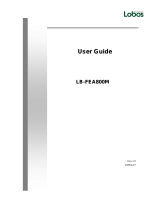
VS-2400S 24 Ports VDSL2 Managed IP DSLAM with POTS splitter USER’S MANUAL Ver.A3
4.2.9.1 TFTP Backup Configuration ............................................................................................................................ 132
4.2.10 SNTP Setting .......................................................................................................................................................... 133
4.3 L2 Features ......................................................................................................................................................................... 135
4.3.0 VLAN Configuration .................................................................................................................................................. 136
4.3.0.0 Static VLAN .................................................................................................................................................... 137
4.3.0.1 GVRP VLAN ................................................................................................................................................... 143
4.3.0.2 QinQ VLAN ..................................................................................................................................................... 144
4.3.1 Forwarding and Filtering ........................................................................................................................................... 147
4.3.1.0 Dynamic MAC Address ................................................................................................................................... 148
4.3.1.1 Static MAC Table ............................................................................................................................................ 149
4.3.1.2 MAC Filtering .................................................................................................................................................. 151
4.3.2 IGMP Snooping ......................................................................................................................................................... 152
4.3.3 Spanning Tree .......................................................................................................................................................... 154
4.3.3.0 STP system .................................................................................................................................................... 154
4.3.3.1 MSTP system.................................................................................................................................................. 159
4.3.4 DHCP Relay and Option 82 ...................................................................................................................................... 165
4.3.4.0DHCP Option82 ............................................................................................................................................... 165
4.3.4.1 DHCP Relay.................................................................................................................................................... 166
4.3.5 Trunking .................................................................................................................................................................... 167
4.4 Access Control List ............................................................................................................................................................. 171
4.4.0 IPv4 ........................................................................................................................................................................... 173
4.4.1 Non-IPv4 ................................................................................................................................................................... 177
4.4.2 Binding ...................................................................................................................................................................... 179
4.4.3 QoS VoIP .................................................................................................................................................................. 181






















